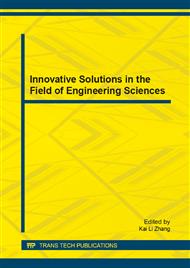p.135
p.144
p.149
p.155
p.161
p.166
p.171
p.181
p.187
Computational Simulation of Multi-Product Flow in an Oil Transportation Pipeline
Abstract:
This paper presents a predictive investigation using Computational Fluid Dynamic (CFD) techniques focusing on the study of contamination that occurs between different products in an oil pipeline under normal operating conditions. The use of CFD techniques yields detailed flow conditions including the velocity fields, phase distribution and interface evolution, which can provide valuable information to the oil industry especially in the distribution of oil products. The Volume of Fluid (VOF) model is used in this project in a pipe with two fluids. Simulation results show the interface evolution between the two fluids and how it is affected by properties such as viscosity ratio and pressure difference. Operational data from the Nigerian National Petroleum Corporation was obtained to validate the results from the simulations.
Info:
Periodical:
Pages:
161-165
Citation:
Online since:
June 2014
Authors:
Price:
Сopyright:
© 2014 Trans Tech Publications Ltd. All Rights Reserved
Share:
Citation:


